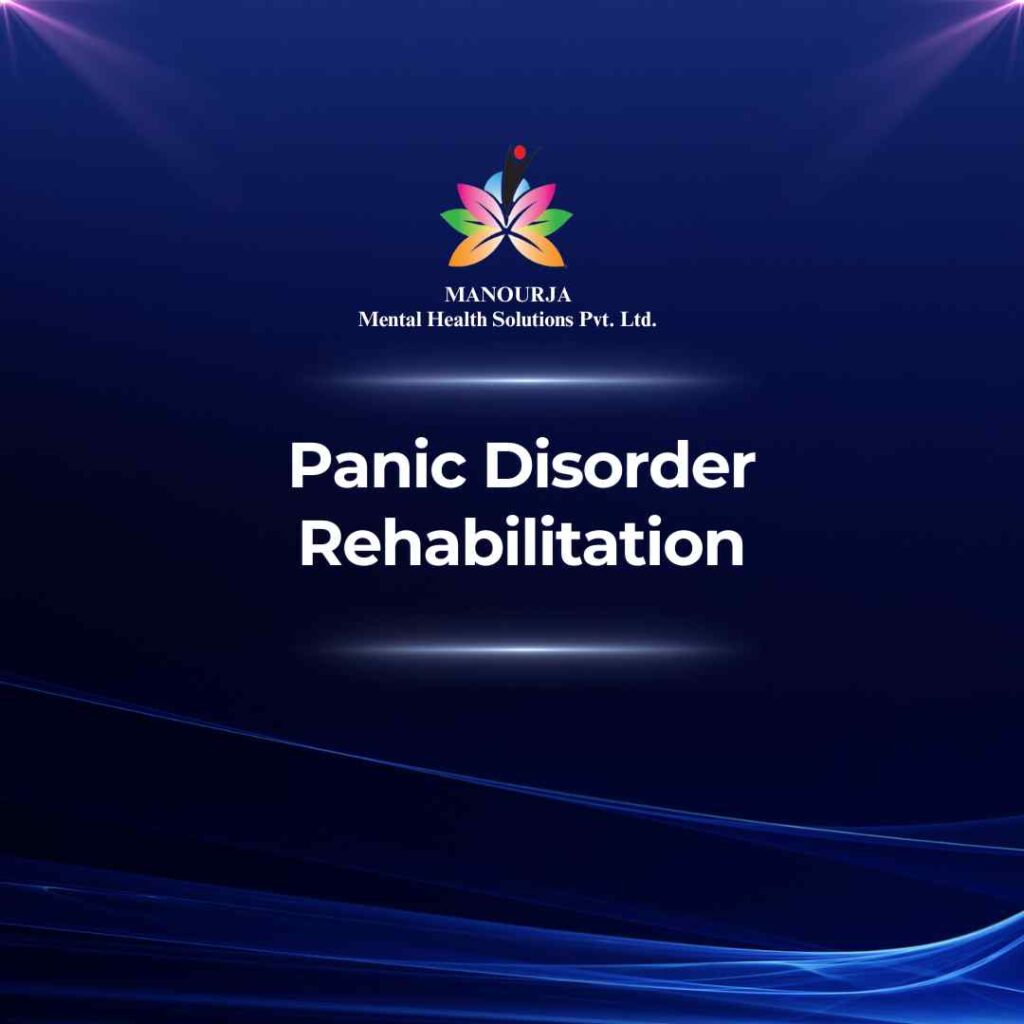Panic Disorder Rehabilitation

Panic Disorder is characterized by sudden, unexpected episodes of intense fear accompanied by physical symptoms. These panic attacks can be profoundly disabling and may lead individuals to avoid situations where they fear an attack might occur. Understanding the signs, symptoms, and appropriate treatment setting—outpatient (OPD) or inpatient (IPD) psychosocial rehabilitation—is essential for effective management and recovery.
Signs and Symptoms of Panic Disorder
Key symptoms that individuals and family members should be aware of include:
- Sudden and Repeated Panic Attacks: Episodes of intense fear or discomfort that peak within minutes.
- Physical Symptoms During Attacks: Including heart palpitations, chest pain, dizziness, shortness of breath, trembling, or abdominal distress.
- Persistent Concern: Ongoing worry about having another panic attack.
- Behavioral Changes: Avoidance of activities or places due to fear of panic attacks.
Indicators for OPD vs. IPD Psychosocial Rehabilitation
Outpatient (OPD) Psychosocial Rehabilitation
- Suitable for individuals who experience panic attacks but maintain a reasonable level of functioning.
- Indicated when individuals have a supportive home environment that can facilitate recovery.
- Effective when the frequency and intensity of panic attacks are manageable with scheduled therapy sessions.
Inpatient (IPD) Psychosocial Rehabilitation
- Necessary for individuals whose panic attacks lead to severe physical symptoms, extreme avoidance behaviors, or suicidal thoughts.
- Recommended if there is a high risk of harm to oneself or if panic attacks severely impair daily functioning.
- Required when outpatient interventions are ineffective or when comprehensive, 24-hour monitoring and support are needed.
Factors Influencing the Decision
- Severity of the Disorder: The intensity and impact of the panic attacks on the individual’s daily life.
- Risk of Harm: Potential for self-harm or significant lifestyle impairment due to the panic disorder.
- Social Support: Availability and robustness of a supportive network that can help manage the condition.
- Previous Treatment Response: Effectiveness of prior outpatient care or need for more structured treatment.
Role of Psycho-social Rehabilitation in Treating Panic Disorder
Psycho-social rehabilitation focuses on reducing symptoms, improving emotional and psychological resilience, and restoring functional ability through:
- Skill Development: Training in coping strategies to manage and eventually reduce panic symptoms.
- Cognitive Behavioral Techniques: Addressing fears and behaviors related to panic attacks.
- Stress Management: Techniques to manage general stress that may trigger panic attacks.
Techniques and Approaches Used at MANOURJA
At MANOURJA, a variety of evidence-based methods are utilized:
- Cognitive Behavioral Therapy (CBT): The primary treatment for panic disorder, focusing on identifying, understanding, and changing thinking and behavior patterns.
- Exposure Therapy: Gradually exposing patients to the thoughts, images, and situations that trigger their anxiety.
- Mindfulness and Relaxation Techniques: Teaching methods to calm the mind and body, reducing overall anxiety and the likelihood of panic attacks.
- Group Therapy: Providing support and sharing experiences with others facing similar challenges.
Steps in the Rehabilitation Process at MANOURJA
- Comprehensive Assessment: Detailed evaluation of the individual’s symptoms, triggers, and lifestyle impacts.
- Personalized Treatment Planning: Developing a tailored plan that addresses specific needs using appropriate therapeutic interventions.
- Implementation of Treatment Strategies: Regularly scheduled therapy sessions, both individual and group, employing CBT, exposure therapy, and other methods.
- Continuous Monitoring and Evaluation: Assessing progress and making necessary adjustments to the treatment plan.
- Transition Planning and Aftercare: Preparing for the end of the intensive treatment phase and planning for ongoing support.
Effective psychosocial rehabilitation can significantly improve the quality of life for individuals with Panic Disorder, helping them to manage their symptoms effectively and regain control over their lives. The comprehensive approach at MANOURJA ensures tailored care that addresses both the psychological and practical aspects of living with Panic Disorder.
“Each breath is a step forward—embrace your journey towards calm.”
